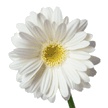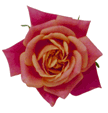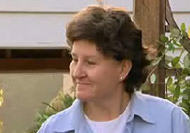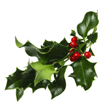Seasonal Planning Calendar

* Check with local authorities to find out more about specific requirements concerning watering, using pesticides and fertilizers, composting and other practices recommended on this page.
Spring, March-May
Summer, June-August
Fall, September-November
Winter, December-February
View and print this calendar (PDF) (2 pp, 1MB, about PDF) | en Español (PDF) (2 pp, 319K, about PDF)
Spring, March-May
Flower and Vegetable Gardens

- Prepare new planting beds and gardens by mixing in one to three inches of compost.
- Pull weeds when they first start growing, while soil is moist and roots are short, before they go to seed.
- Buy plants that resist disease and use less water.
Tree and Shrub Beds
- Prepare new tree and shrub beds by mixing compost into the entire bed (not just planting holes).
Lawns
- Start mowing, about three inches high for most lawns in northern states, two inches for lawns in southern states. “Grasscycle”—leave the clippings for free fertilizer.
- For lawns in poor condition: aerate, overseed and top-dress with 1/4 to 1/2 inch of compost.
- Fertilize lawns if needed in May with “natural organic” or “slow-release” fertilizer.
Watering
- Check soil moisture at plant roots before watering—don’t water until they need it.
- Lay out soaker hoses in beds and cover with mulch.
- Prepare sprinkler systems by testing, adjusting and repairing leaks.
Composting
- Harvest compost from your bin. Throw any uncomposted sticks or stalks back in for another cycle.
Summer, June-August

Flower and Vegetable Gardens
- Mulch flower and vegetable beds with compost or grass clippings to conserve water and control weeds.
- Use fabric row covers to keep pests off sensitive vegetables.
- Identify bugs before you spray, squash or stomp—they may be “good bugs” that eat pests.
Tree and Shrub Beds
- Mulch shrub and tree beds with shredded wood, leaves or bark once a year to conserve water, reduce weeds and feed the soil.
Lawns
- Mow regularly and leave the clippings on the lawn.
- Keep mower blades sharp to reduce lawn damage and brown tips.
- Consider saving water by letting some lawn areas (ones that do’t get heavy traffic) go brown and dormant until fall.
Watering
- Water in the early morning to reduce evaporation.
- Water lawns one inch per week, if no rain, or let go brown and dormant (but water enough to moisten root zone once a month).
- Start and recheck watering systems, and adjust for weather. (Don’t water when it rains.)
Composting
- Add yard debris to compost pile; water pile to keep it moist. Place pile in shade or cover to hold moisture.

Watch the video: EPA GreenScapes Program Manager, Jean Schwab, discussed environmentally-friendly lawn and garden tips for fall at EPA’s GreenScapes exhibit held at the National Botanic Garden last year.
Podcast available
Podcast available
Fall, September-November
Flower and Vegetable Gardens
- Pull emerging weeds in beds when ground is moist and before they develop deep roots.
- Mulch garden beds with leaves or compost to reduce winter weeds and feed the soil. Or plant winter cover crops in open beds.
- Prepare new planting areas by mixing in compost.
Tree and Shrub Beds
- Mulch tree and shrub beds with leaves, shredded wood or bark.
- Plant trees, shrubs and many perennials in early fall to give them a good start.
Lawns
- Improve thin areas of lawn in September-October by aerating, overseeding and top-dressing with compost.
- Fertilize lawns with “natural organic” or “slow-release” fertilizer in September to develop healthy roots and crowd out weeds.
- Plant new lawns to give them the best start before next summer.
Watering
- Reduce watering during cooler weather.
- Shut off and drain watering systems if you expect a freeze.
- Put away exposed soaker hoses or re-cover with mulch if left out.
Composting
- Clear unwanted garden growth and compost it for spring. Keep pile as moist as a wrung-out sponge.
Winter, December-February

Flower and Vegetable Gardens
- Rake winter leaf mulch back onto beds if winds blow it off.
- Weed beds to prevent weeds going to seed.
Tree and Shrub Beds
- Prune fruit trees and other woody trees and shrubs while they’re dormant (December - February). If you have questions about proper timing of pruning for specific plants, check with your local Cooperative Extension office or an arborist.
Lawns – Winter is the Time to Plan for Spring
- Tune up yard equipment; sharpen mower blades.
- Plan drip irrigation or soaker hoses for beds and containers to conserve water.
- Check storage areas for unwanted chemicals and dispose of safely. Call your local solid waste agency for details.
- Plan to replace plants that have disease or pest problems.
- Each year homeowners account for 15 million tons of yard waste. Minimize yard waste by composting and “grasscycling.”
![[logo] US EPA](../gif/logo_epaseal.gif)